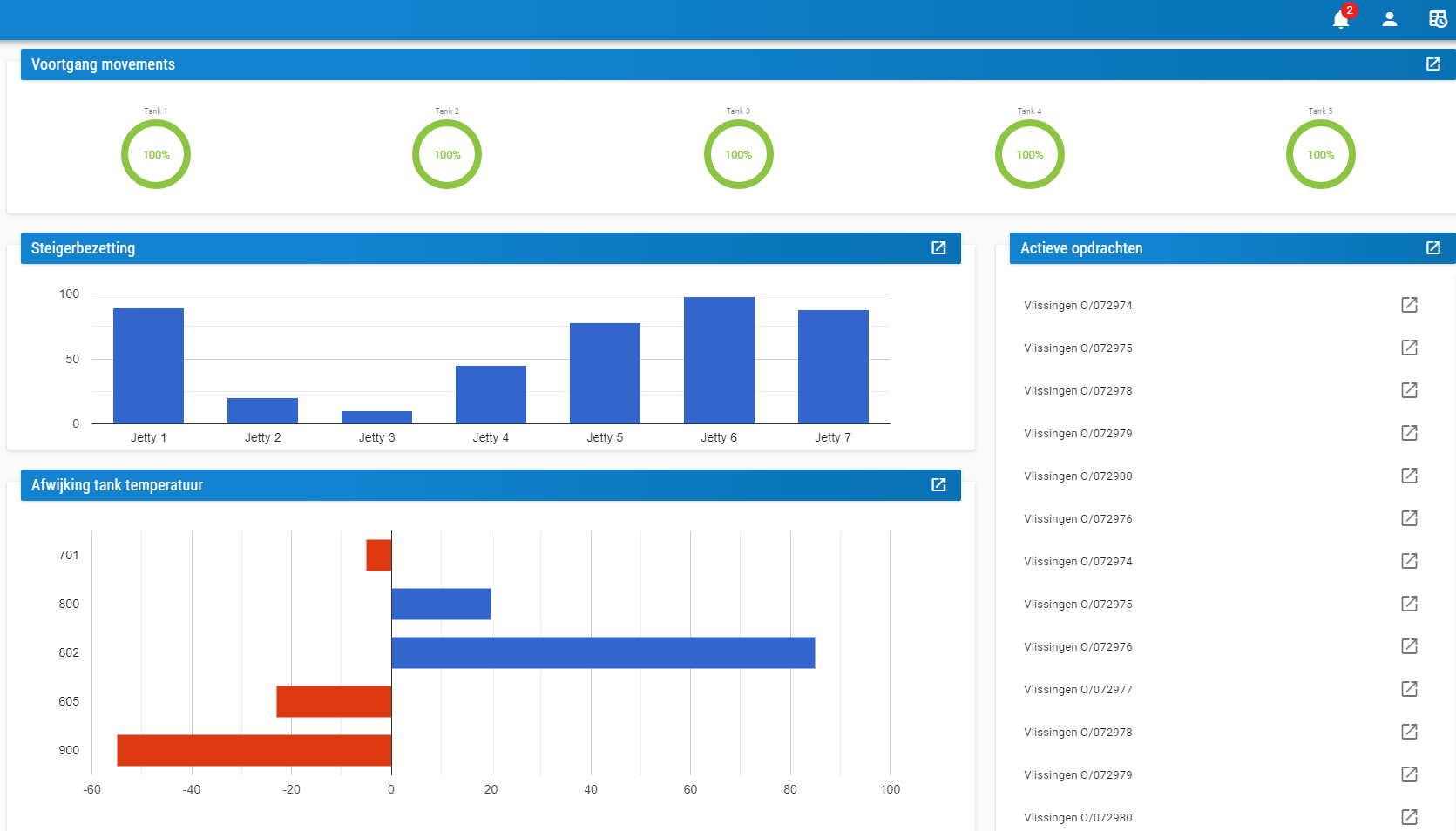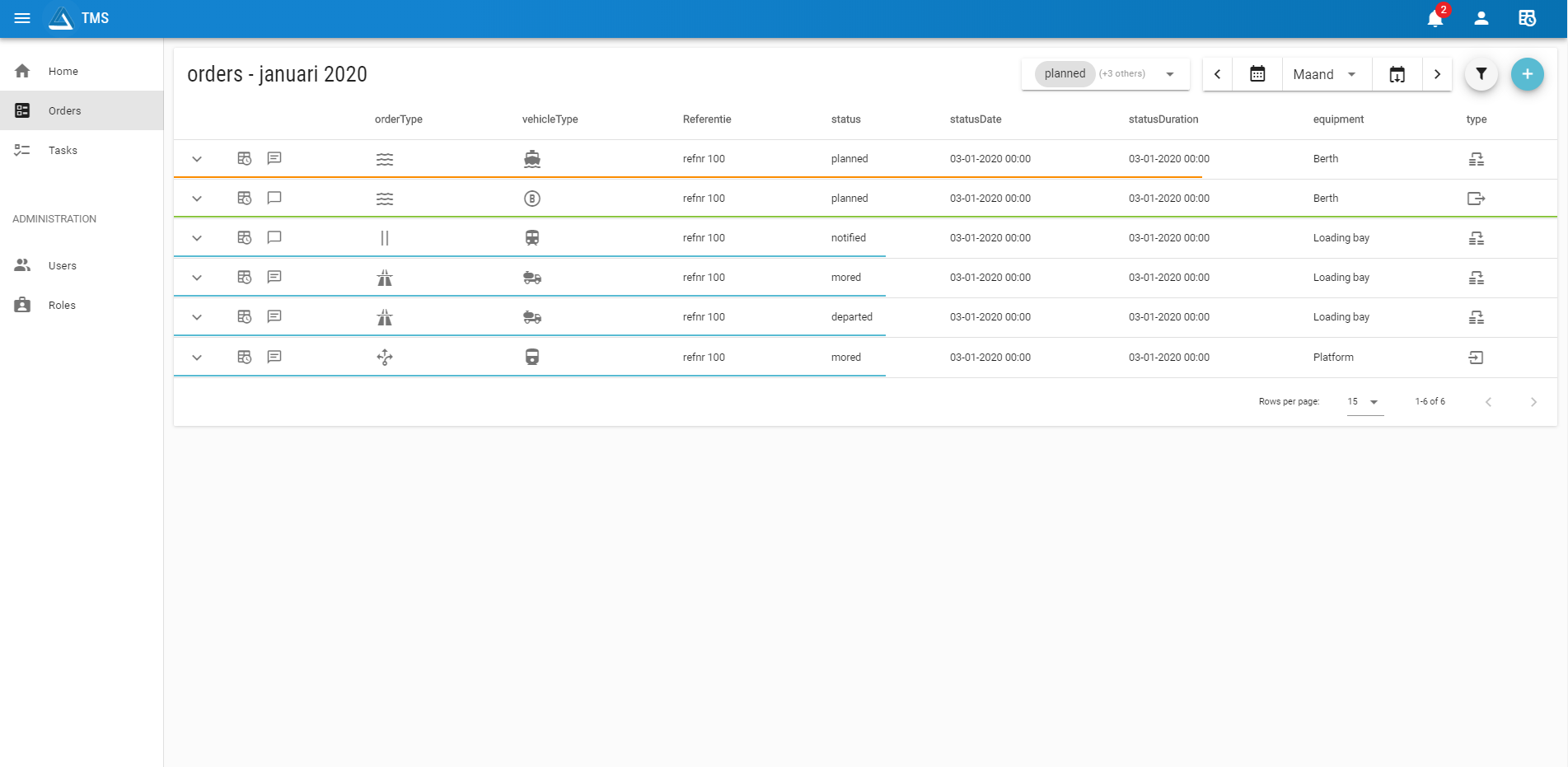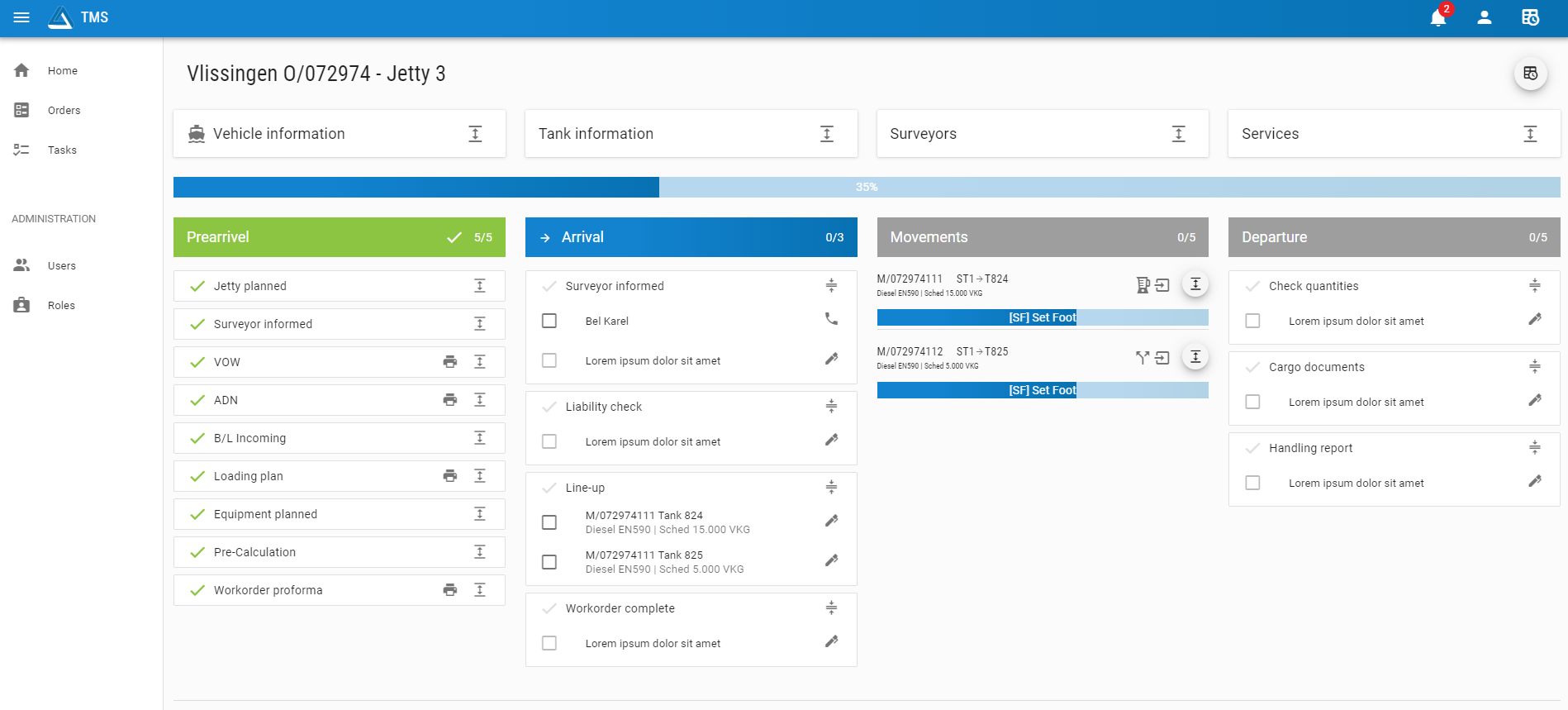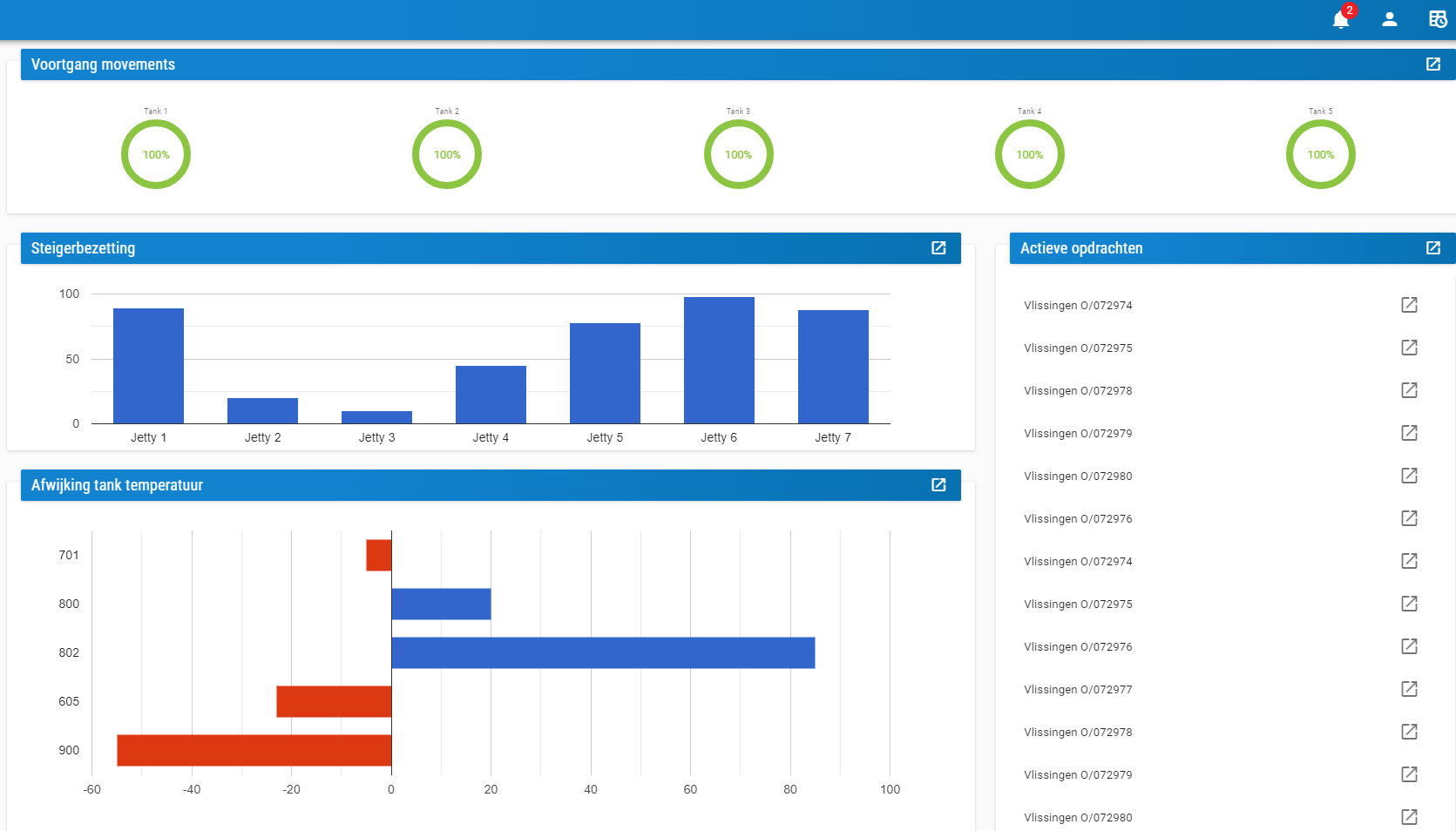Printing lists, manually inputting data and making your own printouts. All those time-consuming operations are a thing of the past thanks to our brand-new Production Management System (PMS). From now on, the ERP layer and the process automation layer within a terminal or factory can be made to work together flawlessly and much more efficiently. Find out all about our new IT application!
Close the gap between ERP and process automation
Do you work at a terminal or in a factory? If so, you will probably have encountered what is a fairly common problem: the big gap between the ERP layer and the process automation layer. As a result, these two departments are likely to work alongside each other and not know each other’s statuses. An example: a message comes into the ERP system. The ERP department processes this request and completes a schedule. But how does this information actually get to colleagues in the field? Well, this is often still done manually, in the form of printed lists, for example. As you’ll appreciate, this way of working is very error-prone and also totally inefficient.
Automated registration
DWG’s new PMS was created to allow these departments to work together in a more efficient and synchronised fashion. Our PMS helps you achieve a better overview, more reliability and greater efficiency. Because let’s face it: the better you are able to prioritise based on a correct overview, the more cost-efficient everything becomes. But you still need to have a clear understanding of the current state of affairs to improve these processes. What time will the ship dock? What exactly is the ship there for? What actions will be performed when? When will the ship finish making the transfer? All of these actions can now be automatically registered in our PMS.
Doing the near-impossible
The beauty of our PMS is that it can be linked to all kinds of systems. In our experience, the ERP layer generally does not offer much in the way of linking capability. In that sense, then, our PMS is a tool for achieving what seems nearly impossible at first sight. Our PMS acts as a wide bridge between the ERP system and your process automation. This is also why we work closely with various ERP system vendors. Everyone does what they are good at in other words.
The linking capability to the internal ERP system is just one of many features. You clearly also want to gather information from third-party systems. For example, for a terminal, general information from the port is highly relevant, and for a factory, information from carriers is important. What could be more convenient than being able to display their schedules (departure and arrival times) in your own system? Our PMS makes this possible. But what impact does this have on you? You have virtually nothing extra to do because we arrange all the links and keep in touch with these third parties.

Role-based and accessible dashboards
In short: all internal and external information is combined in our PMS. You are probably thinking; ‘Won’t that be an incomprehensible jumble of information?’ Well, you’ll be pleased to hear that we have come up with a good solution. The dashboards are role-based. This means that each employee sees only the information that is applicable to his or her position. Clear and easy to understand. Moreover, this PMS is a web app, meaning that you can access it from any device. So your colleagues in the field always have access to the information they need and can also enter their information into the system right away. All your factory walkie-talkies can be put into permanent storage.

Looking for a causal relationship?
Avoid contamination
Another advantage is that the PMS helps us prevent contamination. Mixing different substances with each other is the last thing you want. Because contamination can lead to embarrassing damage claims. The PMS tells you what product passed through the pipe previously and whether the pipe has in fact been cleaned. If necessary the PMS can initiate cleaning.
PMS 3.0
We are currently developing PMS 3.0. This release is a framework tailored to each customer, rather than a standard product. After all, every terminal or factory has different requirements and needs. In addition, the advantage of a framework is that we can continuously optimise it, expand it and keep bringing it up to the next level. This PMS consists of several modules and is separate from your ERP system. As a result, we have more room to manoeuvre and are also not hampered by possible limitations in the ERP system.
An old cliché, but still true: together we are stronger
To design and build this smart IT application, the IT Engineering department worked closely with the Industrial Automation team. This of course is also our great strength: the ability to combine all our areas of expertise, meaning that no issue or assignment is too difficult for us. And we also know exactly what the requirements are, both in terms of IT and automation.



